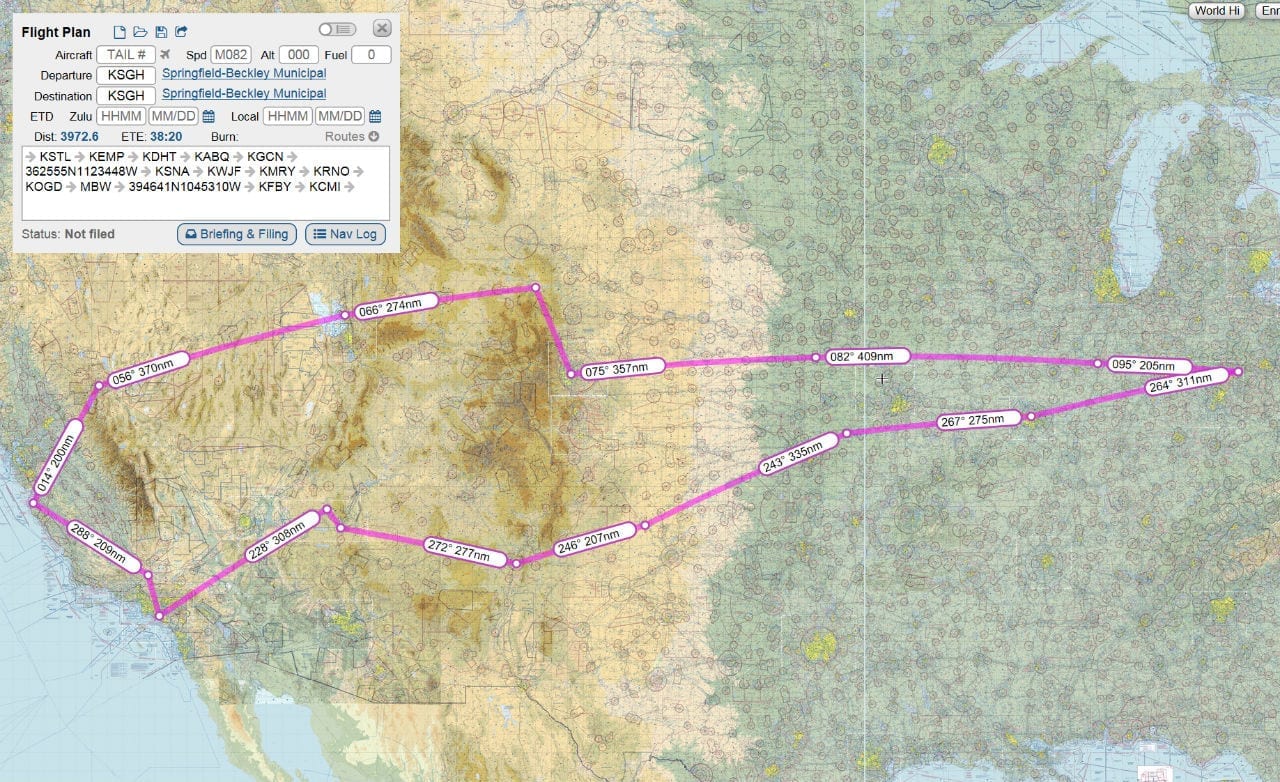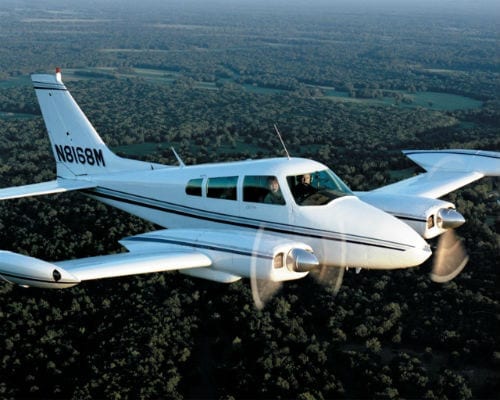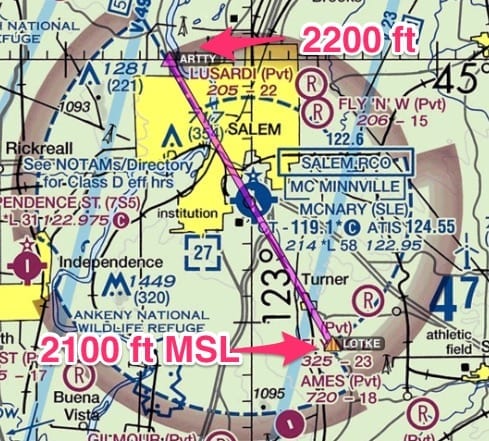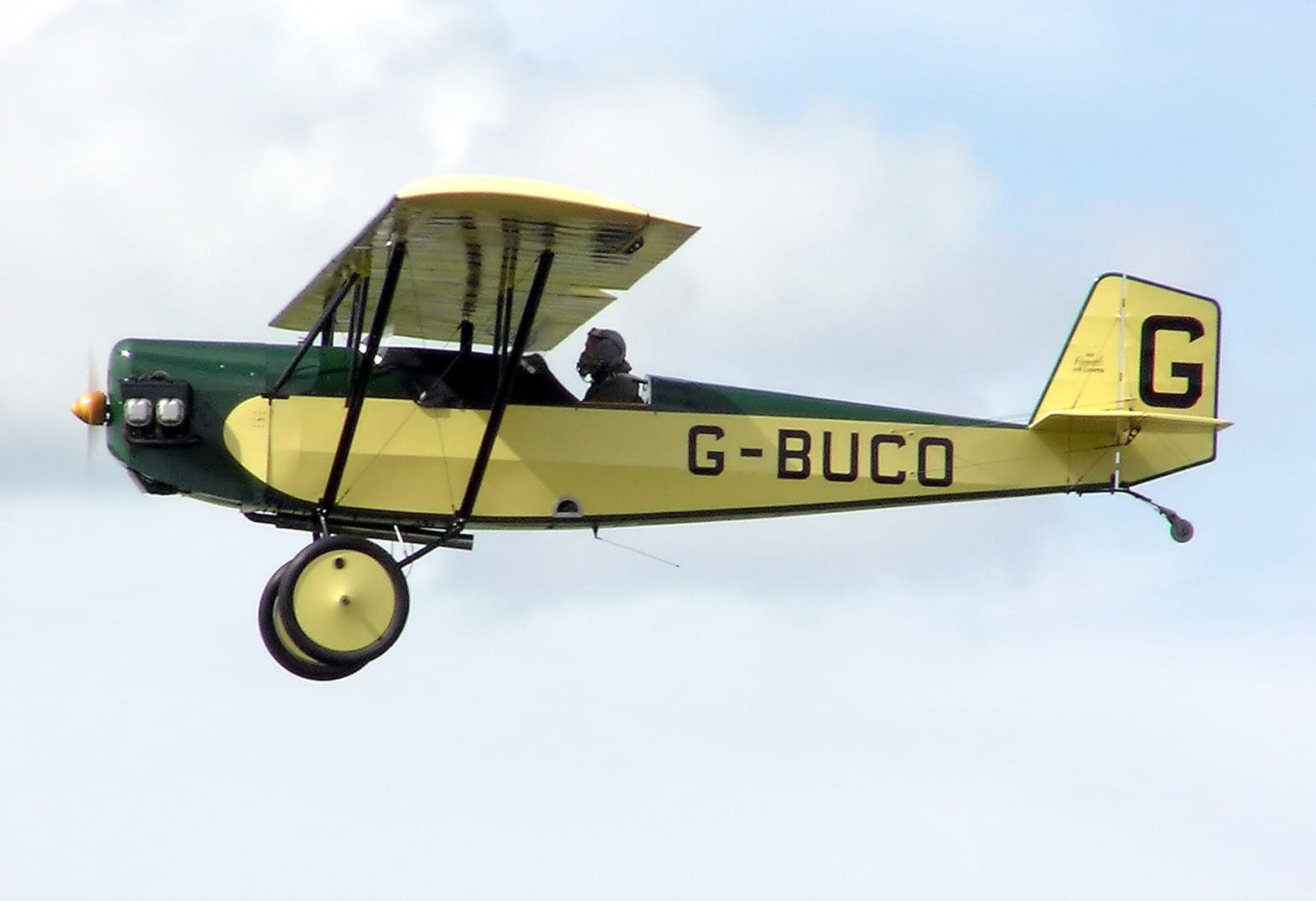
Flying is great, but family is better – a Christmas story
Christmas specialThe first big cross-country flight I made in a light airplane was in 1976. A college buddy and I thought it would be fun to fly from Ohio to California and back over Christmas. Being young, single, and invincible at the time, we did not think too much about what the weather might have to say about it. We departed Springfield, Ohio (KSGH) on December 20 in a borrowed 150-hp AA-5 Traveler.

A light of salvation: flying freight in a Cessna 310
I was thereIn the early 1980s, aviation jobs were not plentiful. Therefore, if one had his sights set on an aviation career, one had to join most any (questionable) outfit promising a lot of flying that came along. The job I had when I took the following flight was with just such a stellar employer.

What all pilots can learn from glider flying
OpinionI don't mean to suggest the absence of a few self-inflicted off-airport sailplane landings precludes a person from being a fundamentally skilled, aware, and eminently safe power pilot, of course. Far from it. It's just that even the relatively simple act of “collecting a glider rating” can easily have beneficial blow-back; learning how to soar without ever leaving the vicinity of your training airport even more; planting a foot in both the power and soaring worlds still more.

Seeing and flying: how good is good enough?
Dick's blogDespite the requirement for a medical, we have been self-certifying all along once leaving the AME’s office. Do I feel well enough to fly? You bet. Have at it. To me, vision was always the toughest question. How you feel is obvious, vision is not, and the slow deterioration in what you see as you age is as insidious as it is certain.

Learning formation flying – hard work, but worth it
I was thereAbout a year after buying an already-built Van’s RV-6 and spending a very hot July earning a tailwheel endorsement, I thought I knew the airplane well enough to attend a formation flying clinic being hosted by the Ohio Valley RVators at the not-too-distant Parkersburg, West Virginia, airport. As interesting as it sounded, the very idea of it caused me quite a bit of stress.

It’s the little things that get you
I was thereI advanced the power and the 300 hp Continental IO-550 began to barrel us down the runway while I continued looking at the trees at the far end. Racing toward them, I checked my airspeed and fuel flow and began to rotate... and just before I did... the engine died! Like in Dead.

Flying dad to the Indy 500 – with a few stops
I was thereIt would be the longest VFR cross country for me by far, with precious cargo across Tornado Alley in springtime to the “Greatest Spectacle in Sports.” But I was 26; what the hell did I know? It was before the internet, weather channel, online anything. No TFRs or alphabet soup of airspace.

Put down the Budweiser – a Vietnam flying story
I was thereI pulled up one of the chairs, recalling the uneventful mission, filling out the paperwork after taking three quick chugs of beer. Soon, I would be over at the O Club, catching up on all the news from my fellow pilots there, whether they be F-4 drivers or Electric Goon (EC-47) ones. Then... CRACKLE – CRACKLE. The little speakers at the radio rack announced an incoming call.

What every VFR pilot needs to know about arriving IFR traffic
TechniqueVFR pilots operate in the same airspace as commercial IFR jet aircraft without having to ever hit the push-to-talk button. Most of the time things go just fine and the two operate without running into each other. Not having a requirement to talk to anyone doesn’t alleviate your responsibility as a small airplane driver to understand the airspace around you, though.

5 things every VFR pilot should say
OpinionRadio communication is always one of the hardest things to learn for many pilots. It actually seems to make flying harder sometimes: you’re already busy flying the airplane when ATC gives you a call so fast all you catch is your tail number. Other pilots in CTAF areas can make it even worse. Let me give you the top five things I’ve learned to say over the years that have made flying easier and safer.

The most inherently dangerous of all flying techniques
I was thereIt’s unwise, it’s in contravention of standing FARs, and it is - without argument - the most inherently dangerous of all flying techniques. It puts crop dusting, aerobatics, and banner towing up in the bleachers. It’s far more dangerous than flying as a salmon spotter for the Alaska fishing industry. Except for herring spotting, that is, which is in a category of its own.

5 things every IFR pilot needs to say
TechniqueSingle Pilot IFR is one of the most dangerous types of flying in general aviation, because it requires high workload and multitasking. The human brain is always more effective when it can focus on one thing; that one thing should be flying the airplane. Over the years I’ve found five key phrases that, when told to ATC, reduce workload and make IFR much easier.

Flying to Chicago for an important mission
I was thereWhere to go when perfect early September weather presents itself on a Sunday and there are no commitments to either the weekday boss who pays the bills or the boss at home who spends the paycheck? It used to be that one could fly to the grand metropolis known as The Windy City and land at an airport conveniently located right on the downtown lakeshore, but as we all know, Meigs Field is no longer the pilot’s gateway to Chicago.

How flying saved my life
I was thereTo be honest, flying didn’t really save my life. It did, however, make me a better person, dad, husband and surgeon. Unlike many who grew up dreaming to fly, I didn’t start in aviation until I was 30. I never really thought that it was a possibility for me to become a pilot. This all changed with a free hamburger at a hangar at a small airport.

Ten-hut: military flying excitement
LogbooksIn the latest installment in Richard Collins's fascinating Logbooks series, he takes us back to some of his most memorable military flying adventures. All those flights, from the T-33 to landings on an aircraft carrier, lead Collins to one conclusion: "Tell me I didn’t have the best job in the world."

The world needs aviation – how flying keeps us grounded
John's blogBefore I stray too far into religion or politics, let me assure you I am not running for office. But all the complaining does make me consider the unique role aviation has played in my life, and most pilots' lives I suspect. Might it be the miracle cure we're looking for? Consider the following.

Defensive glider flying – remember the big picture
I Can't Believe I Did ThatI had to make a decision within seconds, so I turned base. To my right I still saw him continuing before I focused on the airstrip. After a well-sectored pattern and a smooth touchdown, I suddenly heard the voice of my instructor over the radio: “35, retract your speed brakes!”

Practical tips for family flying – how to keep everyone happy
TechniqueIf you are a flying family, or want to be one, you will quickly realize that there is very little information online about flying with kids. I can tell you how much flying with your family is great, amazing, rewarding etc., but you probably don’t need too much convincing - you need the HOW. So here is my HOW.

5 key flying lessons – some things that had to be learned the hard way
LogbooksYou can’t say “been there, done that” until you have actually been there and done that. Then you should be able to add “and learned that.” The alternative is for someone else to check the “Gotcha” box for you.

Why I’m giving up flying – life as an “ex-pilot”
OpinionWe all know the day will come when we will fly as PIC no more, whether because we keel over dead, get too sick to pass the medical, feel that our skills have deteriorated irreversibly, burn out on aviation, or simply run out of money. For me, a combination of factors added up to an important question.
